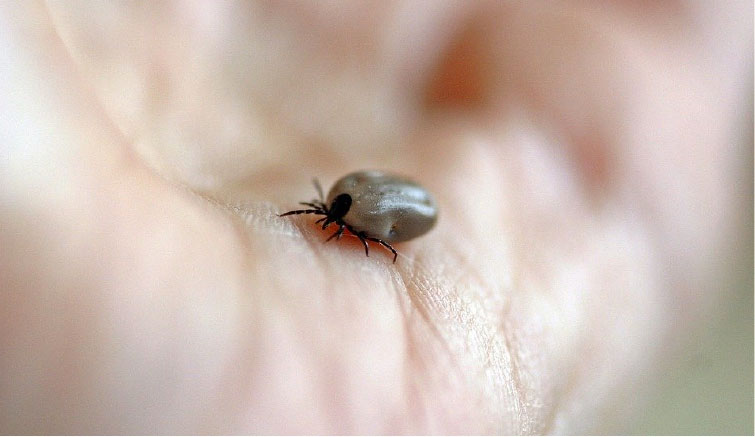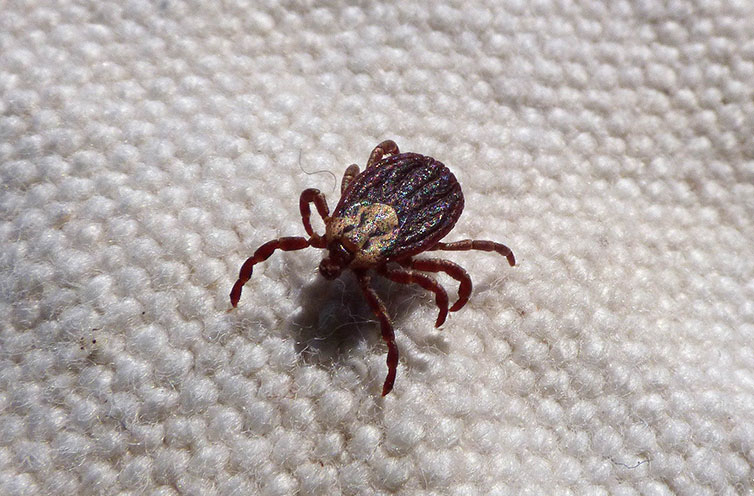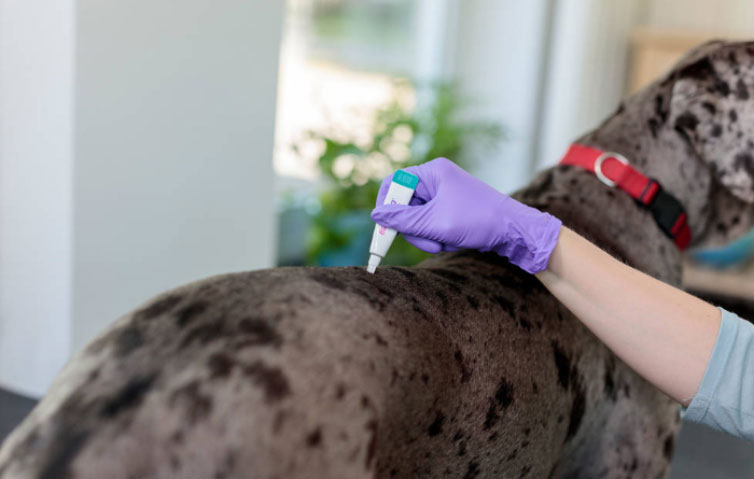Debunking Tick Myths with Bravecto® – a Tick Treatment
There’s a creature that adores the South African spring and summer just as much as you and your pup: the tick. This nasty beasty can put a real damper on your fun in the sun with all the misinformation spread about it. But never fear: Bravecto®, the effective tick treatment for dogs, is here to set the record straight and debunk some tick myths.
TICKS ON DOGS

Posted by bravectosouthafrica – 02 April 2020
Time to Debunk 10 Popular Tick Myths
Stop the spread of misinformation and discover how ticks can really affect you and your fur baby.
Myth 1: A Tick Is a Tick
This, unfortunately, isn’t the case. ±899 tick species are found across the globe and can be divided into two groups: hard ticks and soft ticks.
Hard ticks resemble a flat seed and have a hard shield behind their mandibles. Soft ticks don’t possess a hard shell and resemble raisins.
It’s likelier that you and your pooch will have to deal with hard ticks. Both Brown and Yellow Dog Ticks are the most common disease transmitting ticks in South Africa and can cause serious health complications once they’ve started feeding.
Myth 2: Ticks Can Only Cause Tick Fever (Biliary)
If you thought that ticks could only cause Biliary (babesiosis), then we have some bad news for you… The true list of tick-borne diseases is pretty extensive and includes:
- Anaplasmosis
- Canine Bartonellosis
- Ehrlichiosis
- Haematrophic Mycoplasmosis
It is thought that there are 100+ known tick-borne diseases and it isn’t only your pets you have to be worried about – you yourself may fall victim.
Tick-borne disease symptoms may initially be the same for humans and animals. Fever, joint pain, lethargy, appetite loss and weakness can all be early indications of tick-borne disease. It can quickly escalate to something more serious if left unchecked.

Myth 3: Unable to See a Tick? Then It’s Not a Problem

There are certain tick species out there that are so tiny they get overlooked. You may not think so, but the tick problem can actually worsen once the tick has left its host. Once a female tick has finished feeding and mating, they drop from their host and lay thousands of eggs.
These eggs will first go on to develop into larvae, followed by nymphs and then finally moult to become full-fledged adults – ready to start the disease spreading cycle all over again.
Myth 4: Ticks Are a Warm Weather Issue
Although they thrive in warmer conditions, ticks are a year-round problem. When the weather gets colder, ticks simply burrow away and hibernate. Whether it’s underground, under decks, inside sheds or in your home’s foundations, ticks will find a way (and place) to beat the cold. When temperatures rise above freezing, ticks wake up in search of their next blood meal.
Think about all the times you’ve taken your pooch for a nice stroll on a warm winter’s day. The two of you aren’t the only ones who want to enjoy the warm weather while it lasts. This is why it’s crucial for you to invest in flea and tick treatment for your dogs year-round. Never give those pesky parasites an opening to strike.

Myth 5: Ticks Can Fall From Trees onto You and Your Pet
Good news! You and your doggo don’t have to worry about ticks falling from above when strolling down a tree-lined lane. Ticks can’t fly, jump or run. They spend their time in damp, shady areas and enjoy clinging to low vegetation and tall grasses. From here they latch onto passing hosts.
Ticks are able to sense an oncoming host via body heat, carbon dioxide emissions and vibrations. As soon as you or your dog brush by a prime tick hideout they grab on with their two front legs and find the best spot to start dining on their blood meal. They’re often able to feed to their fill without being so much as noticed.
Myth 6: Indoor Pets Will Remain Tick Free
There’s a common misconception that flea and tick treatment isn’t necessary for indoor dogs. We’re here to tell you that this is absolutely not the case. Even indoor pets can fall victim to ticks.
Ticks are able to sneak inside your home by clinging onto your clothes and shoes. From here the tick’s first order of business will be finding a suitable host to feed on, as its life depends on it.

Myth 7: Ticks Can’t Survive Indoors for Long
Brown Dog Ticks, also known as kennel ticks, love nothing more than making themselves at home. This species of tick is special because their life cycle is able to continue even when indoors.
The fact of the matter is that Brown Dog Ticks can remain active, even when colder weather rolls around. They remain snug as a bug in a rug – literally! Some of their favourite indoor hiding places include:
- Behind wall heaters
- Homes with dogs
- Inside cracks
- Inside dog kennels (hence the name)
- On draperies and walls
- Underneath furniture
- Underneath rugs
A female Brown Dog Tick is able to lay up to 4 00 eggs after feeding.

Myth 8: Burning Ticks Off Is the Right Way to Go
So, a tick has latched itself onto you or your beloved pooch and you want to remove it. But how? Well, we can tell you one thing – not with fire! Grabbing a lighter isn’t the safe way to go and is far from the best tick removal treatment for humans or dogs.
Just think about it: bringing a lighter close enough to your skin to burn off a critter that’s potentially smaller than a sesame seed is just asking for trouble. It not only increases the likelihood of developing a burn, but also the chances of infection.

Myth 9: A Soapy Swab Will Remove Ticks
We know, we know. Ticks are really gross. This is why many people will opt to try and remove them via smothering. Whether you’ve heard of soaking a cotton ball in dishwashing liquid, nail polish remover or rubbing alcohol doesn’t matter. The point is, this remains an ineffective tick removal method.
It takes more time than tweezer removal, which gives pathogens a better chance of infiltrating your bloodstream. Only after having the tick removed do you use rubbing alcohol to disinfect the afflicted area and kill off any remaining microbes.
Myth 10: You’ll Know When a Tick Bites You
You may think that you’ll know the moment you get bitten by a tick, but this is highly unlikely. Ordinarily, tick bites are painless and the only way you’ll usually know that you were bitten is by going out of your way to look for them.
Ticks can remain undetected for days, slowly drinking their fill on your body. Get in the habit of thoroughly checking yourself and your pooch after coming in from the great outdoor or places that are known tick hotspots. Check the spots you can’t see with a hand mirror.

Invest in Peace of Mind with One of the Best Flea and Tick Treatments for Dogs on the Market
Keep your best friend protected against fleas and ticks with Bravecto®’s treatment range for dogs. Whether you opt for the delicious chewy treat or our convenient topical treatment, your dog will experience long term protection with a single dose.
Bravecto® Chew will protect your pup for 12 weeks with a single dose. Simply give your dog their treat by mouth with their food. The Bravecto® Spot-On for Dogs topical treatment will keep your pooch protected against ticks for 4 months and fleas for 6 months. Applying the Spot-On treatment is fast and easy – all you have to do is part the fur between your dog’s shoulder blades and dab the product onto their exposed skin.
Buy Bravecto® flea and tick treatment for dogs to keep your canine companion protected from pests no matter the time of year.
Subscribe to our Newsletter
Get to know your furry friend better! Sign up for all things dog- or cat-related.
The Hairy Facts about the dreaded hairball
12 April 2021
Help! My dog’s barking mad! Volume 2
12 April 2021
Your Itchy, Scratchy Cat – All About Cat Skin Problems
12 April 2021
The Dog’s Diet: A Bone of contention?
01 April 2021
Mango Fly Worms: How to Spot and Eliminate them
Posted on November 28,2019
Managing Mange And Mites In Your Dog
Posted on June 11,2018
Why Do Cats Purr and How? Learn What Your Cat Is Saying
Posted on October 14,2020
How to Get Rid of Ear Mites in Dogs
Posted on November 06,2019









